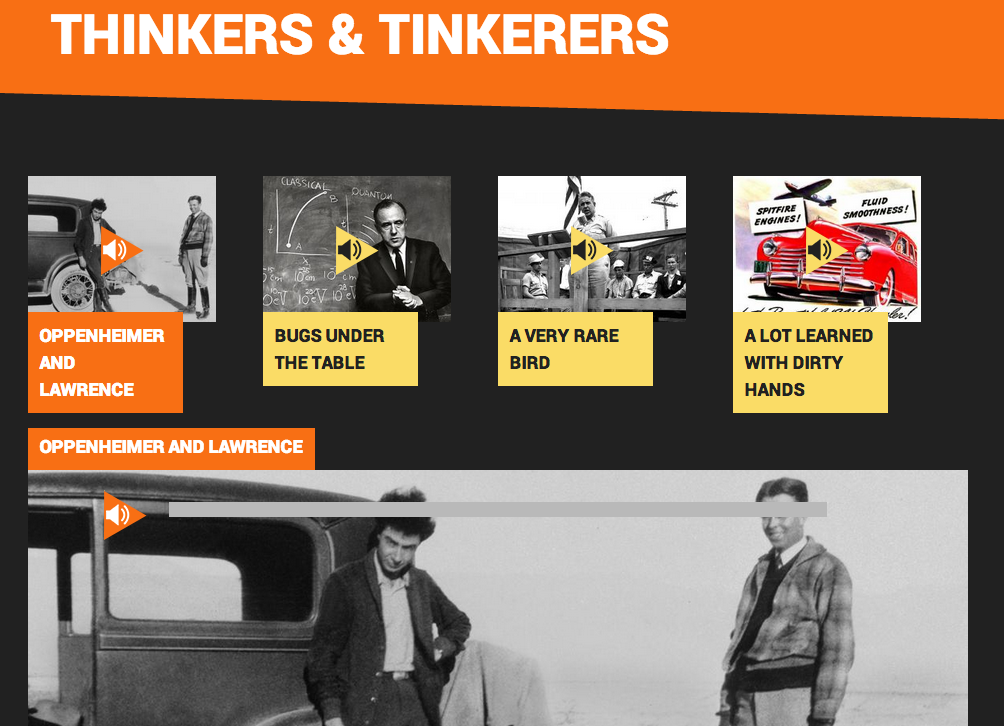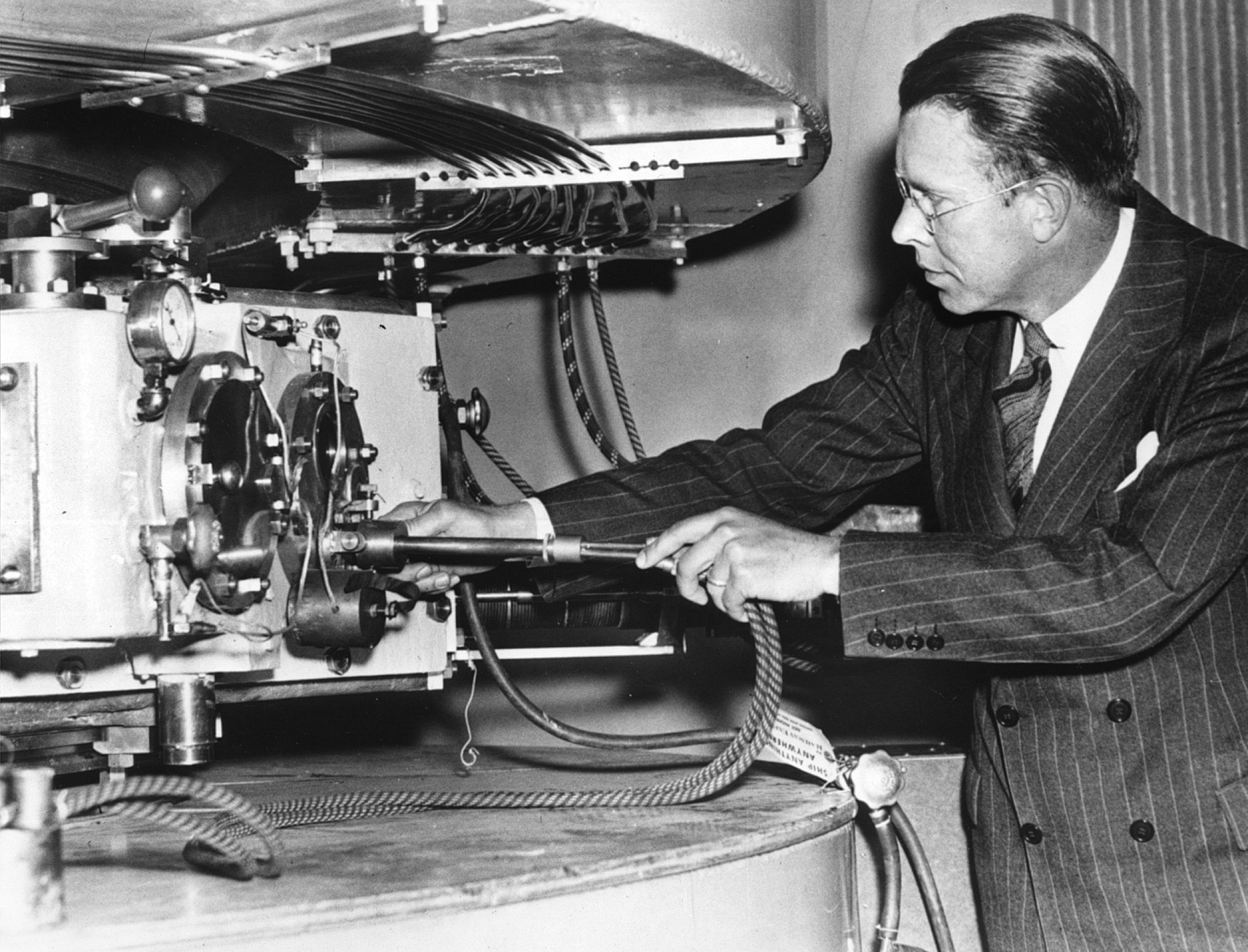The Atomic Heritage Foundation (AHF) has launched a “Manhattan Project Innovations” tour with over two dozen vignettes addressing the extraordinary scientific and engineering innovations that came out of the Manhattan Project and their legacy for today. The tour is live on AHF’s “Ranger in Your Pocket” website, which features tours on Manhattan Project sites and themes.
Tourists around the world will be able to listen to first-hand accounts of scientists and engineers who worked on the Project and developed revolutionary innovations to solve complex, first-of-a-kind problems. The tour, which features several different stops such as “Thinkers & Tinkerers,” “Overcoming the Odds,” and “Health and Safety Monitoring,” highlights the ingenuity and resourcefulness of Manhattan Project scientists well beyond the creation of an atomic bomb.
In one vignette, nuclear physicist Philip Abelson explains his unique liquid thermal diffusion process for separating uranium isotopes: “All it consisted of was three concentric pipes. This is all you had to put together and put heat in the middle and cool on the outside and uranium isotopes separate in between. The light goes to the hot and climbs, and the heavy goes down…it worked!” Abelson’s new process was installed at the S-50 Plant in Oak Ridge in just sixty-seven days and helped speed up production of uranium fuel for the atomic bomb.
 The tour also features insights from Manhattan Project experts. David Kaiser, a Professor of the History of Science at the Massachusetts Institute of Technology (MIT) and author of How the Hippies Saved Physics: Science, Counterculture, and the Quantum Revival, explains the ways in which teamwork and collaboration between the disciplines inspired innovation during the Manhattan Project: “On many Manhattan Project sites there were people trained in engineering who were sometimes for the first time working very closely—elbow to elbow—with people trained in very abstract and very theoretical basic sciences… The hot house of war threw them into projects with immensely pressured timelines where they had to learn how to work together.”
The tour also features insights from Manhattan Project experts. David Kaiser, a Professor of the History of Science at the Massachusetts Institute of Technology (MIT) and author of How the Hippies Saved Physics: Science, Counterculture, and the Quantum Revival, explains the ways in which teamwork and collaboration between the disciplines inspired innovation during the Manhattan Project: “On many Manhattan Project sites there were people trained in engineering who were sometimes for the first time working very closely—elbow to elbow—with people trained in very abstract and very theoretical basic sciences… The hot house of war threw them into projects with immensely pressured timelines where they had to learn how to work together.”
In “The Colloquium,” Manhattan Project veteran Ben Diven remembers how Laboratory Director J. Robert Oppenheimer inspired innovation through weekly colloquia in Los Alamos: “The colloquia were one of the most important things…Oppenheimer insisted that everything could be discussed there. The idea was to have various group leaders describe what the group was working on and what their main problems were, what they were having trouble with. And very frequently then it would turn out that somebody who had not associated with them at all would come up with an idea of something that would actually be important.”

Other tour stops, such as “Culinary Arts,” focus on some of the lesser-known inventions that came out of the Manhattan Project. Harry Petcher, the manager of Hanford’s box lunch department, recalled an ingenious solution to solve the problem of spreading butter on the 50,000 sandwiches required to feed Hanford’s enormous workforce: “We were slowing down the job during the spreading of the margarine…One of the girl's husbands came up with a solution. He took a paint spray gun with a thing, which sucks the paint up. He took two cathodes—metal cathodes that had electric heat in them—and put those down into the margarine. Then he’d suck up the liquid margarine and take the spray gun, “Psh, psh, psh,” and spray margarine on the bread.”
The “Ranger in Your Pocket” website allows visitors to take self-guided tours of Manhattan Project sites, such as the B Reactor in Hanford, based on a BYOD or “Bring Your Own Device” strategy. This technology-based tool represents a fundamental shift in engaging visitors by empowering them to use their personal smartphones or tablets to create their own tour experience.
AHF plans to develop additional Manhattan Project tours on the “Ranger in Your Pocket” site. One tour will focus on Bathtub Row, Fuller Lodge and the former Technical Area in downtown Los Alamos, NM. Another will focus on espionage and the role that spies played during the Manhattan Project.
For the Innovations tour, AHF is very grateful for the support of the Crystal Trust, M. J. Murdock Charitable Trust, Institute of Electrical and Electronics Engineers (IEEE), and Manhattan Project veteran James Schoke. AHF worked with 4Site Interactive Studios to design and develop the “Ranger in Your Pocket” website.





